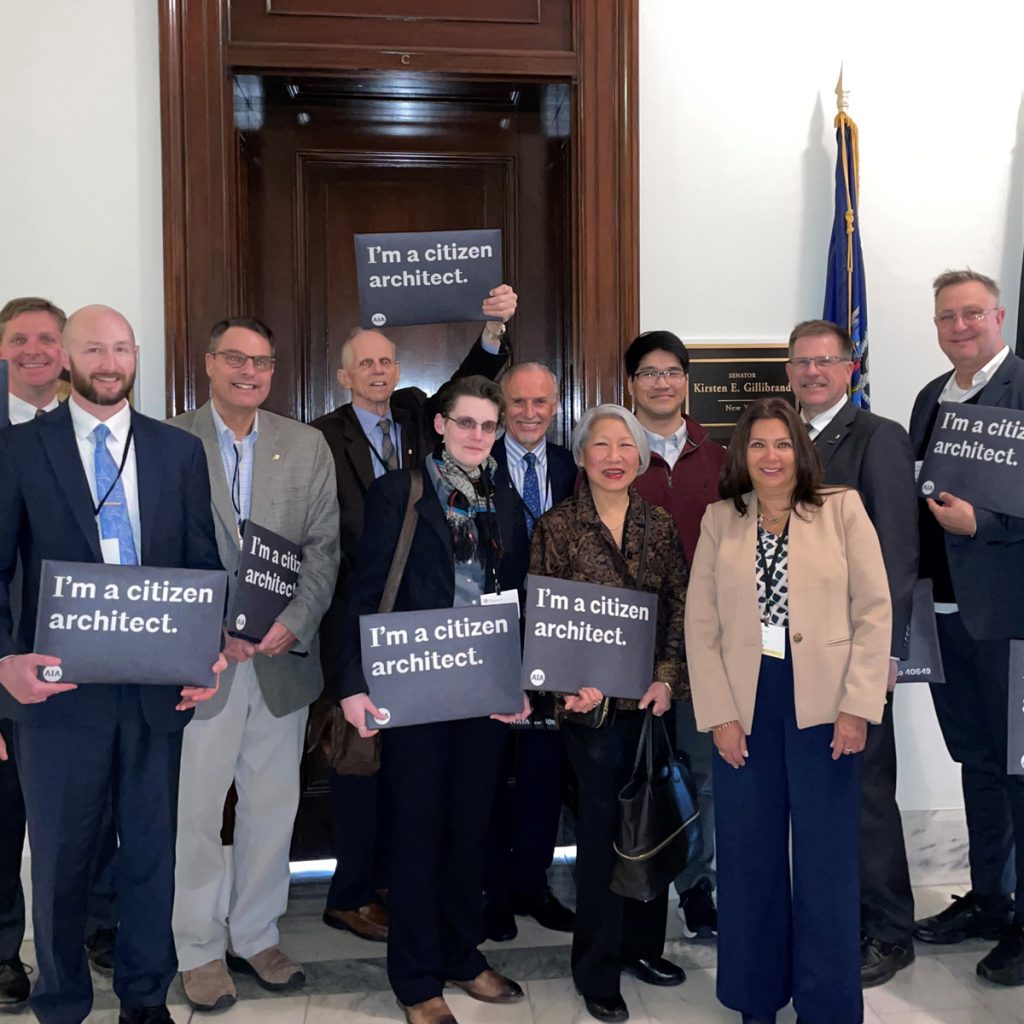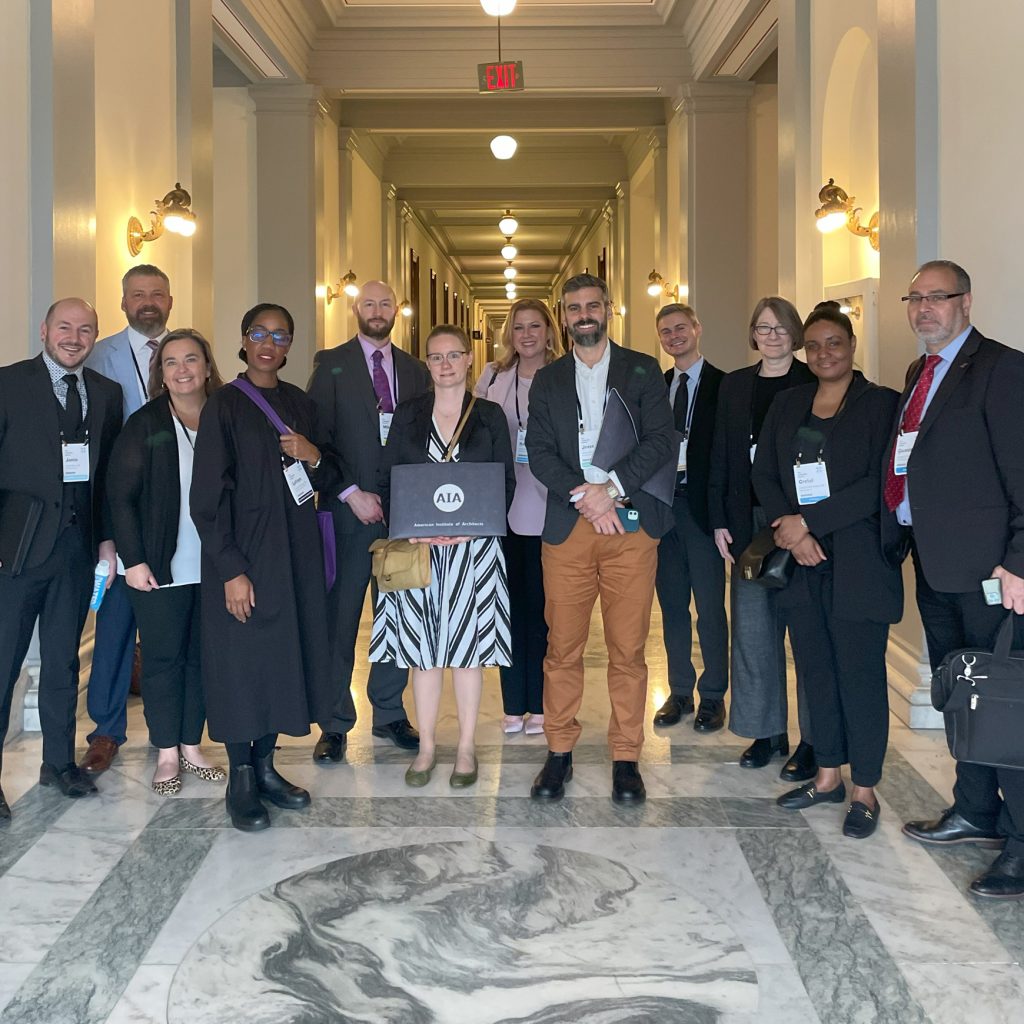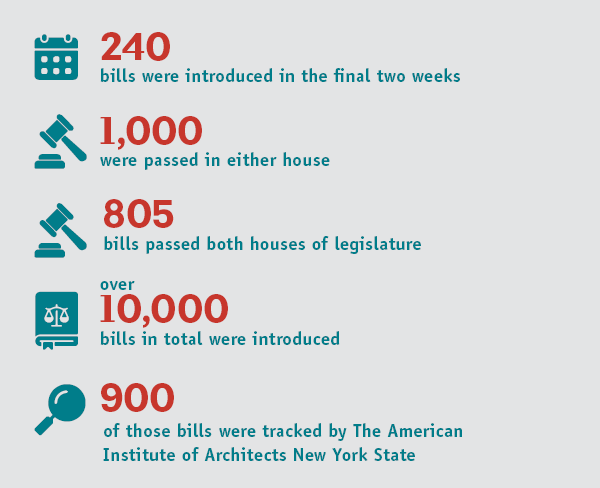Government Advocacy Priorities

National and state leaders develop government advocacy priorities using member surveys and policy networks, like AIA’s State and Local Government Network (SLGN). Additionally, the AIA Government & Community Relations Staff collaborate with component staff and volunteer leaders to identify policy trends affecting the profession nationwide. They share knowledge and best practices for addressing issues proactively and reactively.
State and local governments pass the laws and policies that most directly impact architectural practice. Thus, state components like AIANYS play a crucial role in successful advocacy efforts. While AIA provides valuable information and direction, AIANYS uses this information to drive positive policy changes and defend against harmful proposals.
AIANYS focuses on advocacy efforts in areas such as:
- Practice Encroachment
- Tort Reform
- Regulation of the Profession
- Enforcement of Licensing Laws
- Project Delivery
- Procurement/Qualifications-Based Selection (QBS)
- Sustainability/Resiliency/Disaster Assistance
- Building codes
- Historic Preservation/Rehabilitation
- Taxes
Government Advocacy Benefits

Membership with AIANYS equips the organization to be a credible voice in Albany and city halls statewide. Furthermore, lobbying is essential for any successful organization, especially in New York, where hundreds of millions of dollars are spent on lobbying each year. Opponents of our priorities, like tort reform, invest millions annually in lobbying and political campaign contributions to maintain the status quo. Consequently, without engagement, the architecture profession risks marginalization.
Additionally, the AIANYS Vice President for Government Advocacy, Executive Vice President, and Director of Government Affairs collaborate with leadership and a contracted lobbyist to execute the annual Legislative Program. The Government Advocacy Committee develops the Legislative Program, which the Board of Directors approves in January each year. Beyond legislative advocacy, AIANYS facilitates leadership discussions with State agencies through the Public Sector Practice Committee. Furthermore, the Executive Vice President and staff work to build and expand relationships within the design and construction industry and with organizations outside the industry that advocate for aligned issues.
Ultimately, government advocacy aims to equip you with the tools needed to make a meaningful impact. Founded by architects in New York City in 1857, AIA continues to be the credible voice of the architecture profession, with your help, well into the future.
2025 Legislative Session Round-Up

The 2025 New York State Legislative Session officially concluded in the early hours of June 18th. Over the course of session, the Senate passed 1,743 bills while the Assembly passed 995 bills. In total, 856 bills passed both houses. The Governor has until the end of the calendar year to act on these measures. While the Legislature can technically transmit bills at any time, they typically hold delivery until requested. Once a bill is formally delivered, the Governor has 10 days to take action.
Bills that extend expiring laws are generally delivered during the summer months. More complex or higher-profile bills are often held for later in the year. In many cases, the Governor opts to sign thematic packages of legislation at press conferences that may align with calendar events or public awareness campaigns—for example, labor-related bills near Labor Day or environmental legislation during UN Climate Week.
Though the regular session has ended, legislative leaders have reiterated that they retain the option to return later in the year, if necessary—excluding any veto override efforts.
